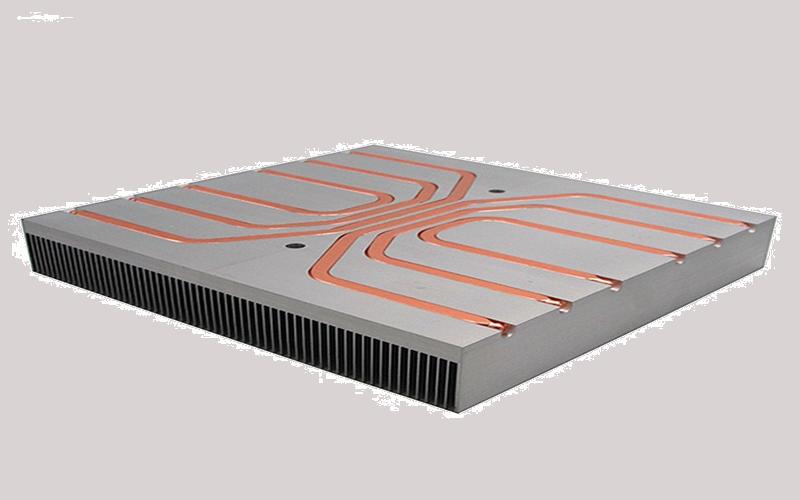The Advantages of Using Cooling Plates for Heat Dissipation
When it comes to managing heat in electronic devices, cooling plates have proven to be a highly effective solution. These innovative plates offer numerous advantages over traditional cooling methods, making them a popular choice in various industries. In this article, we will explore the advantages of using cooling plates for heat dissipation and why they are an excellent option for ensuring optimal performance and longevity of electronic devices.
1. Enhanced Heat Transfer Efficiency
Cooling plates are specifically designed to improve heat transfer efficiency in electronic devices. With their high thermal conductivity, these plates effectively draw heat away from sensitive components, preventing overheating and potential damage. By utilizing materials such as copper or aluminum with excellent thermal conductivity, cooling plates enable efficient dissipation of heat without compromising the overall performance of the device.
2. Compact and Lightweight Design of Using Cooling Plates
Cooling plates are known for their compact and lightweight design, making them suitable for various applications where space is limited. Their slim profile allows for easy integration into electronic devices without adding unnecessary bulk. This advantage is particularly valuable in industries such as aerospace, automotive, and telecommunications, where weight and size constraints are critical factors.
3. Versatile Applications of Using Cooling Plates
One of the significant advantages of cooling plates is their versatility in applications. These plates can be customized to fit specific device requirements, making them suitable for a wide range of electronic devices, including power electronics, LED lighting, computer servers, and electric vehicles, among others. Their adaptability ensures that cooling plates can be utilized in various industries and applications where heat dissipation is crucial.
4. Reduced Noise Levels
Traditional cooling methods, such as fans or blowers, can generate significant noise, which can be disruptive and undesirable in many environments. Cooling plates offer a silent cooling solution, eliminating the need for noisy fans. This advantage is particularly beneficial in applications that require a quiet working environment, such as medical equipment, audio devices, or office spaces.
5. Increased Reliability of Using Cooling Plates
Cooling plates significantly enhance the reliability of electronic devices by effectively dissipating heat and maintaining optimal operating temperatures. By preventing overheating, these plates help prevent performance degradation, premature component failure, and costly repairs. This advantage is particularly critical in industries where downtime and equipment failures can have severe consequences, such as data centers or industrial automation.
6. Longevity of Electronic Components
Heat can significantly impact the lifespan of electronic components. Excessive heat can cause components to degrade faster, leading to reduced performance and potential failures. Cooling plates efficiently dissipate heat, ensuring that electronic components operate within their recommended temperature range. By maintaining lower operating temperatures, cooling plates help extend the lifespan of electronic devices, reducing the need for frequent replacements or repairs.
7. Energy Efficiency
Utilizing cooling plates for heat dissipation can contribute to improved energy efficiency in electronic devices. By effectively managing heat, these plates reduce the energy consumed by cooling systems, such as fans or air conditioning units. This advantage is particularly significant in energy-conscious industries, such as renewable energy or electric vehicles, where energy efficiency is a top priority.
8. Cost-Effective Solution
Cooling plates offer a cost-effective solution for heat dissipation compared to traditional cooling methods. While the upfront investment may be slightly higher, the long-term benefits outweigh the initial costs. By preventing overheating and ensuring optimal performance, cooling plates help reduce maintenance and repair expenses associated with heat-related issues. Additionally, their longevity and reliability contribute to cost savings in the long run.
9. Easy Installation and Maintenance
Cooling plates are designed for easy installation and maintenance. Their compact size and lightweight nature simplify the integration process into electronic devices. Additionally, their solid-state design eliminates the need for moving parts, reducing the risk of mechanical failure. This advantage translates to simplified maintenance requirements and reduced downtime, ensuring uninterrupted operation of electronic devices.
10. Environmentally Friendly
Cooling plates offer an environmentally friendly solution for heat dissipation. Unlike traditional cooling methods that may involve harmful chemicals or generate excessive noise and vibration, cooling plates have a minimal environmental impact. Their energy-efficient operation and recyclable materials contribute to sustainability goals and reduce electronic waste. This advantage aligns with the increasing emphasis on eco-friendly practices in various industries.

